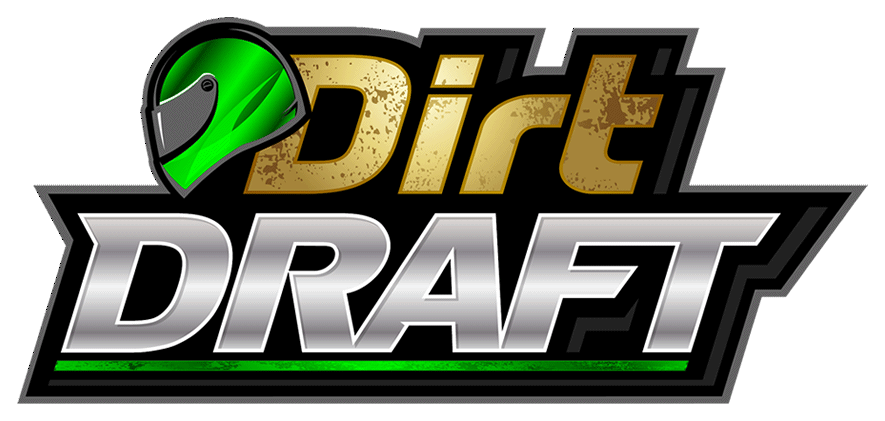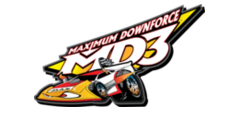
Obituary
Garrison's racing success was 'a dream come true'
By Todd Turner, Kevin Kovac, Alli Collis and Robert Holman
DirtonDirt.com staffGrowing up in a tiny central Arkansas town in the early ‘80s, Wendell Wallace remembers being too young to drive himself to the dirt track on the other side of Little Rock.
So he’d catch a ride with an older buddy — Joe Garrison — and while watching race cars go around and around as they squirmed among splinters on creaky wooden bleachers, the young men dreamed of seemingly unattainable racing careers.
Against all odds, both reached Hall of Fame dreams — Wallace as a driver, Garrison as a chassis manufacturer — and Wallace waxed nostalgic about Garrison upon his friend's death on Wednesday evening after a battle with cancer. The GRT Race Cars co-founder, who became one of the sport’s innovative car builders, was 60.
“To live in that little town of Greenbrier, which we both lived there, and he was a little older than I was and he took me to the races when I wasn’t even old enough to go to the races,” recalled the 53-year-old Wallace. “We’d sit in the grandstands and watch the races. It’s kinda ironic.
“He’d say, ‘Man, I want to build one of these cars one day,’ like that, and I’d sit there beside him and I’m thinking, Yeah, and I said, ‘Someday I want to drive these race cars’ or something like that. And now look how it all unfolded. It’s just a dream come true really.”
While Garrison’s life was cut short, the legacy of his dream continues with Wallace and many of Dirt Late Model racing’s standout drivers remembering the man who launched GRT with his brother Mike in a modest two-car garage, growing it into one of Dirt Late Model racing’s pre-eminent businesses that sold more than 4,200 Late Models over 30 years.
GRT was among chassis manufacturers setting the standard for modern-day Dirt Late Models, selling top-notch equipment, developing the Team GRT concept and capturing many of the sport’s most prestigious series titles and biggest purses during its heyday of the mid-1990s and into the early 2000s.
Garrison’s company reached its pinnacle in 2000 by sweeping the podium at Eldora Speedway’s $100,000-to-win Dream with winner Freddy Smith, Ray Cook and Wallace finising 1-2-3 at the historic oval in Rossburg, Ohio. Other major victories for GRT came at the Dirt Track World Championship, Topless 100, Show-Me 100, Hav-A-Tampa Shootout, Jackson 100 and Pittsburgher 100.
Garrison, who was inducted into the National Dirt Late Model Hall of Fame in 2013, is fondly remembered by drivers who steered GRTs to success.
“Joe, he loved that racing and the race cars and the engineering part of it,” said Skip Arp, the retired Georgetown, Tenn., driver who began driving Garrison’s equipment in 1997. “He had a lot of really good drivers that drove for him. He just always loved it and had been around it and involved with racing as long as I’ve known him.
“He was a great person. He was one that was a little bit hard to get to know when you first got around him, but he was all about GRT cars and back when I first met him I was driving something different. He didn’t talk a lot then, but after we started running his cars we just become friends. He was a great person, a great family man. I’m going to really miss him.”
Terry Phillips, one of Missouri’s winningest all-time Dirt Late Model racers and the son of Springfield legend Larry Phillips, first worked with Garrison and his brother Mike, GRT’s co-founder, at Florida Speedweeks in the early '80s.
“I was in high school, just a young kid, and got to know him shortly after that. We’ve probably known each other 35 years and I probably drove his car for 30. We’ve had a long relationship and have been friends for a long time,” said Phillips, an 11-time regional series champion and longtime GRT dealer. "I’m going to miss him bad. He was a good friend and we’ve had a lot of good times together, sad times together, went on vacations together. He was just a good friend.”
Dale McDowell of Chickamauga, Ga., who drove GRT cars more than a half-dozen years and scored major victories and the 1999 Hav-A-Tampa Dirt Racing Series title, was a teammate with Wallace at Monday Motorsports when working closely with Garrison.
“He was very instrumental in our success that we had in the ‘90s, so he’s going to be missed,” McDowell said. “But he will be remembered for his accomplishments and what he did. And as a person as well. He was a very giving person. So he’ll be remembered for that as well.”
GRT connections
Jack Sullivan, who spent several years piloting the GRT house car, says Garrison “was like a dad to me,” but it took time — and lots of work — for the relationship to develop.
“When I was in high school, I had a buddy who wanted to race a car and I was gonna work on it but I didn’t know nothing about it," Sullivan said. "Actually, I was working at Kentucky Fried Chicken — I remember that — and a guy come through the drive-thru and said, ‘There’s a guy who builds race car in Greenbrier. You oughta go check him out.’
“I was about done cooking chicken, so I said, ‘I’ll go get a job up there (at GRT),’ and I went up there one day to talk to ‘em. I met Joe and he said, ‘I’m not really hiring anybody.’ Well, I kept going there almost every day for about almost two weeks and he finally said, ‘Listen, I’m gonna give you a job so you’ll leave me alone.’
“So I started sweeping the floor, picking up pop rivets and nails. Joe was one of those guys … you had to prove yourself to him. He didn’t just take you in because of what you said and what you thought. If you had a little work ethic to you, he’d take you in a little bit, and he started doing that with me. He asked me one day if I wanted to go the races with him, and I went to the races.
“I stayed up there over 20 years. I built cars, I sheet-metaled cars, painted cars — I did everything. I went to the races, I put lights on his house, I went and shingled his barn. One thing working for Joe Garrison, you were on call 24 hours a day, 7 days a week. If he called you at 3 a.m., you had to get up and go.”
Jason Fitzgerald of Middleburg, Fla., connected with Garrison — “a damn good guy,” Fitzgerald said — later in his career, but he was glad to get the opportunity to work with the Hall of Famer in driving what was called GRT’s “Southern house car” in 2015-’16.
Fitzgerald, whose racing career also included crewing for World 100 winner Earl Pearson Jr., had driven a GRT successfully starting in 2008 and ran into Garrison a few years later at Eldora Speedway while working for Pearson.
“I knew Joe, but I didn’t know him well, and he come up on me and kind of caught me off guard," Fitzgerald said. "He walked up to me and shook my hand and said, ‘Man, I gotta thank you.’ I said, 'For what?' He said, ‘Well, you sold me a bunch of cars last year with all those races you won. If you ever go home, give me a call.’ I was like, 'All right, cool.'
“I ended up moving home (after leaving his position with Pearson) and he was the first person to call me to help me get a car and get going. We just had a great relationship after that. I was driving for (team owner) Merle Mixon at that time, and Merle got ready to retire, and as soon as Joe got wind of that he just automatically picked me up.
“I’m just a little guy down here in Middleburg, Fla., you know what I mean? He did a lot for me that he didn’t really have to do and that most people wouldn’t have done. We worked really hard and we won a ton of races in his cars and with him.”
Ray Cook, who drove GRTs from 1995-’02, winning the 2000 Show-Me 100 at West Plains (Mo.) Motor Speedway among other events, remembers first becoming familiar with GRT when Arkansas driver Tony Cardin made a trip to Boyd’s Speedway in Ringgold, Ga., for a double-feature program in the early 1990s.
“I guess that trip there sort of introduced the GRT to the Southeast, to this part of the country,” said Cook, who later was a regular on the Hav-A-Tampa Dirt Racing Series. “A few of them started trickling in and then of course his deal with Bill Frye running Hav-A-Tampa. Joe had a car that you started seeing people run good in that you hadn’t never heard of. It was just a good car and everybody who got ‘em ran good.”
Cook remembers how successful Garrison’s cars were at West Plains, a 3/8-mile oval renowned for its slick-track racing.
“The first Show-Me I won in 2000 I was in a GRT. Those cars were so good at West Plains,” Cook recalled. “Joe really focused on the slick and momentum. He really dominated that area of the country out there for a long time … West Plains and Batesville (Ark.). You look at all the races that everybody was winning. I mean I won a few, I was blessed to do that, but you know, like Wendell (Wallace) and Freddy (Smith) and Skip (Arp), Dale (McDowell). He had a really good group of drivers who worked together at that time and it’s still paying off today, really.”
Not without friction
While Garrison had immense success with GRT, it wasn’t without some friction, even with Bill Frye, the driver from Squires, Mo., who moved to Greenbrier and helped put GRT on the map driving the de facto No. 66 house car.
“We had a love-hate relationship,” Frye said of Garrison, with whom Frye didn't speak much throughout the 2010s. But in recent months Frye approached Garrison and they patched up all their disagreements from the past and “we went on like we should’ve been doing all our lives.”
Frye’s wide-traveling success in the 1990s help popularize GRTs as he won throughout the country, including the $35,000 Hav-A-Tampa Shootout at Georgia’s Dixie Speedway in ’95 and the Hillbilly 100 at Pennsboro (W.Va.) Raceway a year earlier.
“We done some phenomenal stuff in the early- and mid-‘90s, and he continued to do it up until 2005 or ’06 probably,” said Frye, who campaigned GRT cars through late 1997 and then again from 2000 until a couple years before he retired from regular Late Model competition in 2010.
“Me and him had a lot of ups and downs,” Frye said, “but I credit him with getting me where I am. He said, ‘Man, you can make a living doing this. I’m telling you, you can win these races.’ I said, ‘Joe, no, no.’ He gave me the confidence to go and do it.”
With Rocket Chassis’s Mark Richards fighting for the same customers as GRT, “Joe didn’t like competition,” Richards said with a laugh. “That would be my best thought of Joe. I mean, I respected him and what he’d done and how he’d done it, but I think Joe looked at us as competition.
“He never was overly friendly to me, but it never was a bad situation, either. I respected the guy and we were cordial. I could go talk to him if I needed to, and I think he respected me enough to have that kind of a relationship.”
Sullivan, who worked at GRT for many years, described Garrison as “hard core” and demanding as an employer.
“There was no doubt about it … he expected you to do a job and you needed to do it,” Sullivan said. “And if he didn’t like it, you’d redo it. That was the way he was. If you had a problem getting your feelings hurt, then you wouldn’t make it around him, because he’d just tell you, ‘That looks terrible. You’ll have to do that again.’
“That was his personality. That’s how things went. He had a work ethic that, for a long time, was right up there with any of them. The phone would ring in the shop at 8, 9, 10, 11 o’clock at night and Joe would answer the phone. We stayed up here until the wee hours working on race cars.”
Sullivan is grateful to Garrison for giving him his start in racing.
“He helped out probably more people than most people ever realize,” said Sullivan, who now races part time while operating the Comp Cams Super Dirt Series with his brother Chris Sullivan. “Me, for example … I didn’t even know what a race car was and he gave me a shot. He was tough to deal with at times, but one thing I can say about Joe is, he was fair. He’d give you a fair chance.”
Refocusing on modifieds
Later in Garrison’s career, GRT’s car production shifted to modifieds instead of Late Models, and that “kind of brought him back to life as far as business goes,” Phillips said.
“I think whenever Joe lost a few of his top drivers and they went other directions, that was kind of the hurt to Joe in the Late Model business,” Richards said. “But he brought the modified business up and got it going and did well with that as well.
“It’s hard to do both. Anybody who’s tried to do both in this business, I’d say you can’t make both go. You can make one or the other go, but it’s hard to do both. You either specialize in one or the other. The biggest problem that all these shops have is having enough people, and enough infrastructure inside the company, to be able to handle the service and the tech and all that stuff. It’s all hard to handle it for both divisions.”
Fitzgerald felt like GRT still had worthy Late Model equipment, but didn’t have enough drivers in Garrison's cars.
“In this vicious sport, this circle that we’re in, if you don’t have X amount of people driving your cars to get feedback from, I’m not really sure if it matters how hard you work, you know what I’m saying?” Fitzgerald said. “Rocket Chassis, they win every week, but look how many people they got. Now Longhorn and Black Diamond, there’s tons and tons of people in them. If you go back to Joe’s era, he had tons of people in his cars. People just got away from him for whatever reason. I think if he could’ve got the right one or two bigger name drivers in there, he’d be right back up there where he was because his cars were good. The quality was there.
“The constant work and grind … the guy never sat down, he never quit. His modified program really picked up drastically and I almost want to say he turned his focus a little bit towards that for quite a few years. He got heavily involved in that and probably got away from his Late Model stuff a little too long before he tried to get back.”
Racing community mourns
Garrison’s death is doubly difficult for loved ones because his wife Katie is fighting her own battle with cancer. With her husband under Hospice care in the final days of his life, Katie was far away in Rochester, Minn., for treatment at the Mayo Clinic for a brain tumor.
The couple’s 4-year-old daughter, Jolie, is being cared for by family members during the unimaginably difficult time.
“I kind of knew something was up, but they wouldn't really say anything,” Fitzgerald said. “But I just know how Joe is. He’s wide open, always on the go, get stuff done, and I could tell he was slowing down a little bit. I really didn’t know he was that sick until recently.
“Man, it’s just a bad deal. It just sucks. Everything that Katie’s going through, and that he was going through, and they’ve got the little girl. But everything happens for a reason … I firmly believe that. Sometimes we don’t know why or what, but I’m sure, when it’s over, we’ll figure it out. But it just sucks because he was so good to so many people. He was really, really good to me, and he was good to me when he didn’t really have to be. That’s the kind of guy he was.”
Arp, visiting Arkansas with his wife Janice, was recently able to say his goodbyes to Garrison, but it’s been a difficult ordeal.
“Heck, I don’t know what to say really. It’s about killed all of us,” Arp said. “I just hope the best for Katie and GRT Race Cars and hope they can continue success and hope everything goes well for them. I know it’s going to be tough without Joe, but I know he’s got a lot of good people there. I just hope they continue on. He’s building good cars.”
Richards recently heard from Sullivan — now a Rocket Chassis driver — and hated to learn of Garrison’s decline.
“Obviously, it shakes you up,” the 58-year-old Richards said. “It just makes you think. I mean, we’re all getting older.”
Wallace, sad to lose a friend, will never forget his early racing days with Garrison before they reached their racing dreams.
“I was probably 14 or 15 years old when we met and started going to the races some,” Wallace said. “My dad owned a gas station in Greenbrier where we lived, and I wasn’t old enough to drive and be able to go to the races. Joe would go down to the races in Little Rock and my dad would fill his truck up and he would say, ‘Here, Wendell wants to go, take him.’ That’s where it all began.”

















































